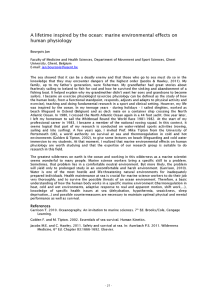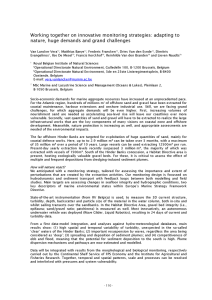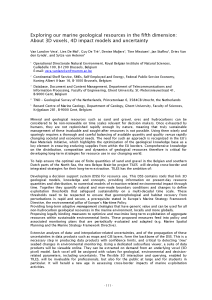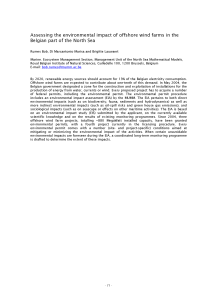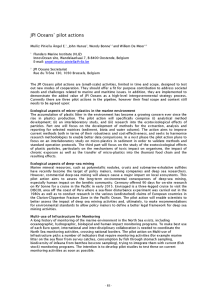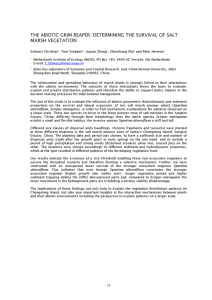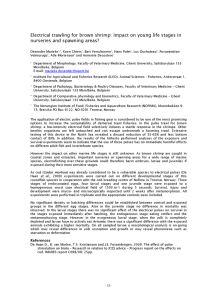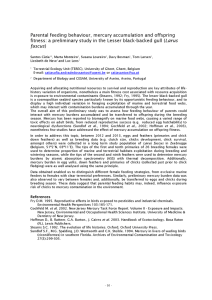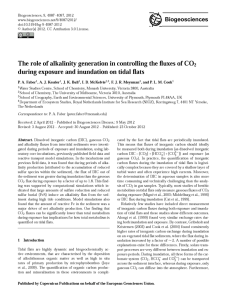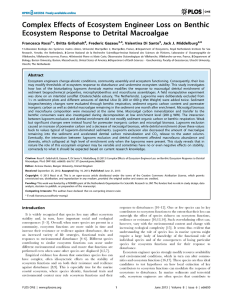Epibenthic c o m m u n itie s ...
advertisement
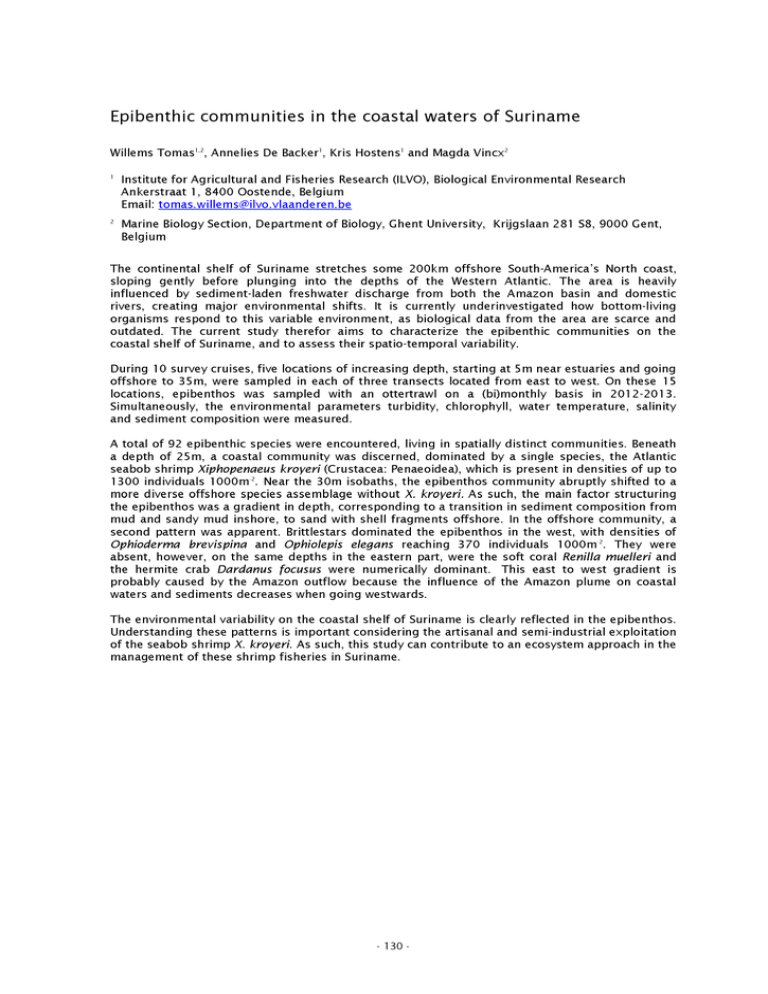
Epibenthic com m u nities in the coastal waters o f Suriname W illems T o m a s '2, Annelies De Backer1, Kris Hostens1 and Magda V incx2 1 Institute fo r A g ricu ltu ra l and Fisheries Research (ILVO), Biological Environm ental Research A nkerstraat 1, 8400 Oostende, Belgium Email: tom as.w illem s@ ilvo.vlaanderen.be 2 Marine Biology Section, D epartm ent o f Biology, Ghent University, Krijgslaan 281 S8, 9000 Gent, Belgium The continental shelf o f Suriname stretches some 200km offshore South-Am erica’s North coast, sloping g en tly before plunging into the depths o f the Western A tla ntic. The area is heavily influenced by sedim ent-laden freshw ater discharge from both the Am azon basin and dom estic rivers, creating m ajor environm ental shifts. It is cu rren tly underinvestigated how b ottom -living organism s respond to th is variable environm ent, as biological data from the area are scarce and outdated. The current study th e re fo r aims to characterize the e pibenthic com m unities on the coastal shelf o f Suriname, and to assess th e ir spatio-tem poral variability. During 10 survey cruises, five locations o f increasing depth, starting at 5m near estuaries and going offshore to 35m, were sampled in each o f three transects located from east to west. On these 15 locations, epibenthos was sampled w ith an o tte rtra w l on a (bi)m o nth ly basis in 2012-2013. Sim ultaneously, the environm ental param eters tu rb id ity , chlorophyll, w ater tem perature, salinity and sedim ent com position were measured. A to ta l o f 92 e pibenthic species were encountered, living in spatially d is tin c t com m unities. Beneath a depth o f 25m, a coastal co m m un ity was discerned, dom inated by a single species, the A tla n tic seabob shrim p Xiphopenaeus k ro y e ri (Crustacea: Penaeoidea), which is present in densities o f up to 1300 individuals 1 0 0 0 m 2. Near the 30m isobaths, the epibenthos co m m un ity a b ru p tly shifted to a more diverse offshore species assemblage w ith o u t X. kroyeri. As such, the main fa c to r structuring the epibenthos was a gradient in depth, corresponding to a tra n sitio n in sedim ent com position from mud and sandy mud inshore, to sand w ith shell fragm ents offshore. In the offshore com m unity, a second pattern was apparent. Brittlestars dom inated the epibenthos in the west, w ith densities o f Ophioderm a brevispina and Ophiolepis elegans reaching 370 individuals 1 0 0 0 m 2. They were absent, however, on the same depths in the eastern part, were the soft coral Renilla m u e lle ri and the herm ite crab D ardanus focusus were num erically dom inant. This east to west g radient is probably caused by the Am azon o u tflo w because the influence o f the Am azon plume on coastal waters and sedim ents decreases when going westwards. The environm ental v a ria b ility on the coastal shelf o f Suriname is clearly reflected in the epibenthos. Understanding these patterns is im p o rta n t considering the artisanal and sem i-industrial e xp lo ita tio n o f the seabob shrim p X. kroyeri. As such, th is study can co ntribu te to an ecosystem approach in the m anagem ent o f these shrim p fisheries in Suriname. - 130 -
